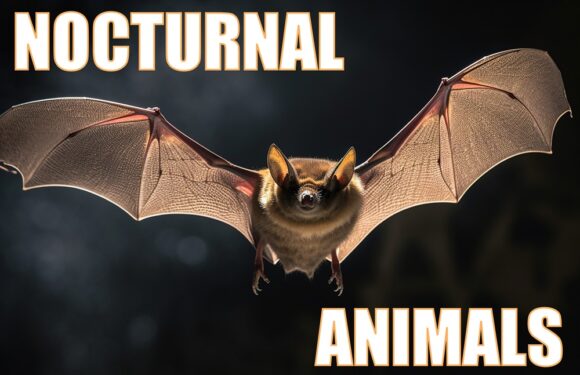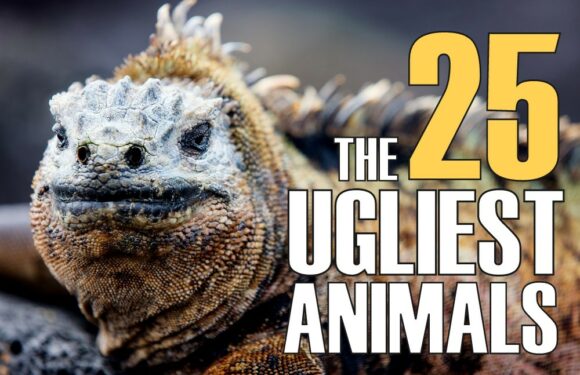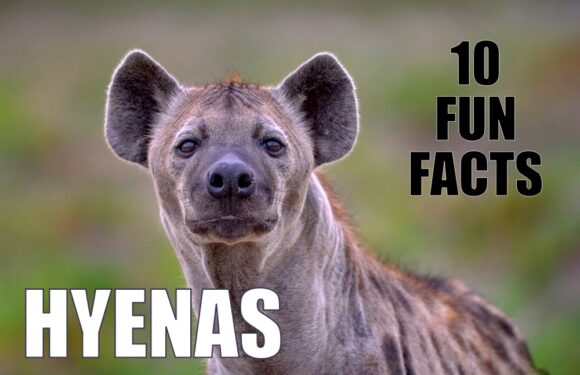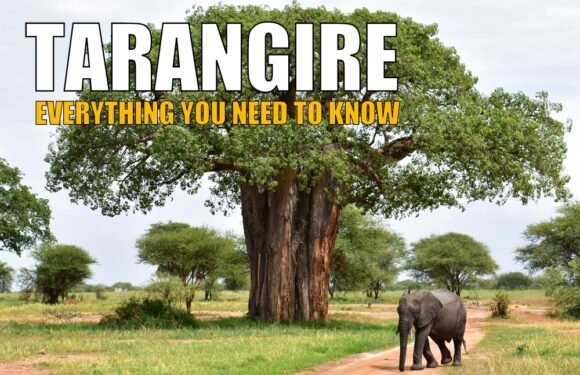
Snow leopards are elusive big cats that reign in high mountain environments of Central Asia. Adapted to life in the cold, harsh climate and rough terrain, these beautiful animals possess a range of traits and behaviors that enable them to survive in extreme conditions.
Here are 10 fun facts about the snow leopard.
1. Snow Leopards are Closer to Tigers Than Leopards

Despite the name, the snow leopard is more closely related to the tiger than the leopard. It is classified under the genus Panthera, which includes other big cats like tigers, lions, and jaguars. Genetic studies show that the common ancestor of snow leopards and tigers diverged from the lineage of big cats about 3.9 million years ago and that snow leopards branched from tigers about 3.2 million years ago. The exact origin of the word Panthera is debated, but it’s thought to come from ancient Greek words related to “panther” or “hunting beast.”
2. They Live in the Mountains of Central Asia

Snow leopards reside in high altitude mountainous areas, generally at elevations of 9,800 to 14,800 feet (3,000 to 4,500 meters). They prefer steep, fragmented landscapes such as cliffs, rocky outcrops, and ravines. The range of the snow leopard spans about two million square miles (5,200,000 square kilometers) through 12 countries: Afghanistan, Bhutan, China, India, Kazakhstan, Kyrgyzstan, Mongolia, Nepal, Pakistan, Russia, Tajikistan, and Uzbekistan. Estimates suggest there are only between 3,500 and 7,000 snow leopards remaining in the wild, though exact numbers remain uncertain.
3. There are Three Subspecies of Snow Leopards

DNA evidence shows that there are at least three subspecies of snow leopard. Panthera uncia irbis (Northern group) is found predominantly in the northern range of the species’ distribution, which includes parts of Mongolia and Russia. Panthera uncia uncia (Western group) is located primarily in the western part of the range, including the Himalayan regions of Nepal and India. Panthera uncia uncioides (Central group) is found in the central regions, which include parts of Tibet and the central Asian mountains. The physical differences among these groups might not be evident but could include variations in fur color and density, body size, and facial markings.
4. Snow Leopards are Masters of Stealth

Snow leopards are often referred to as “ghosts of the mountains” due to their elusive nature. These cats are incredibly hard to spot in their natural habitat. Their smoky-gray coat, patterned with dark rosettes and spots, provides perfect camouflage against the rocky, snowy landscapes. This camouflage aids them in avoiding predators and also turns them into proficient hunters. They’re also extremely light on their feet, able to move surreptitiously and silently in their mountainous environment.
5. They Can Jump Really Far

Snow leopards can leap six times the length of their body, making them one of the most impressive jumpers in the animal kingdom. A typical snow leopard can jump as far as 50 feet (15 meters) horizontally and about 20 feet (6 meters) vertically. This leaping capability is important for navigating the steep and broken terrain of their alpine home. Their long, flexible bodies and powerful hind legs give them the explosive power necessary for these jumps. Additionally, their long, thick tails aid in balancing and steering mid-air during these high leaps.
6. Snow Leopards are Well Adapted to Cold

The snow leopard’s body is evolved to withstand the cold, unforgiving climates of its high-altitude environment. They have small, rounded ears that minimize heat loss and a wide, short nasal cavity that warms cold air before it enters the lungs. Their paws are broad and fur-covered, acting like natural snowshoes that help distribute their weight evenly, and prevent them from sinking in. Finally, the fur on a snow leopard’s body is dense and wooly, providing insulation against the bitter cold. It grows incredibly dense in winter, reaching up to 5 centimeters (2 inches) long on the back and a whopping 12 centimeters (4.7 inches) on the belly,
7. They are Opportunistic Hunters

While the diet of snow leopards primarily includes wild sheep and goats, they are opportunistic feeders that can prey on a variety of animals. They have been known to hunt smaller creatures like hares, birds, and even rodents when larger prey is scarce. This dietary flexibility helps them to survive in their harsh, often food-scarce environments. Snow leopards are also known to occasionally scavenge on the kills of other animals,. Despite their powerful build, snow leopards cannot chase their prey long distances and rely on the element of surprise to make successful kills. Once they have captured their prey, they may drag it to a safer location to eat.
8. Snow Leopards Can’t Roar

Unlike most big cats, snow leopards cannot roar due to the different morphology of their larynx and throat. Instead, they have a range of other vocalizations that are less loud but equally important for communication. These include purring, mewing, hissing, growling, and a peculiar sound known as ‘chuffing’, used in friendly greetings or between a mother and her cubs. This suite of sounds plays a part in the mating process and maintaining the bond between mother and cubs.
9. Snow Leopards are Solitary by Nature

Snow leopards are solitary animals, with individual adults only coming together briefly for mating purposes. They maintain large territories that can range from 12 to 40 square miles (31 to 103 square kilometers), depending on the availability of prey. These territories overlap very little with each other, which minimizes conflict and maximizes breeding opportunities. Snow leopards use scent markings to communicate with other snow leopards about their presence, reproductive status, and territorial boundaries. This helps to prevent direct encounters between these cats..
10. Snow Leopard Cubs are Tiny but Fluffy

When they are born, snow leopard cubs are quite small, weighing only around 11 to 25 ounces (312 to 709 grams) – about the size of a small teddy bear! Thankfully, they come equipped with a thick coat of fur to keep them warm in the cold environment. Just like most other cat species, baby snow leopards enter the world blind. They rely entirely on their mother for warmth and milk. Cubs begin to open their eyes by the seventh day and are weaned at around ten weeks old. However, they remain with their mother for up to 18-22 months, during which time they learn crucial survival skills such as hunting. This extended period of learning from their mothers ensures that once they are on their own, they are fully equipped to survive in the tough mountain environment.
Snow Leopard Quick Facts
- Scientific Name: Panthera uncia
- Common Name: Snow Leopard
- Size: Approximately 3–4.5 feet long (not including tail)
- Weight: 60–120 pounds
- Lifespan: 15–18 years in the wild
- Diet: Carnivore (primarily preys on wild sheep, goats, and other mountainous ungulates)
- Habitat: Alpine and subalpine zones of mountain ranges in Central and South Asia
- Conservation Status: Vulnerable





























































